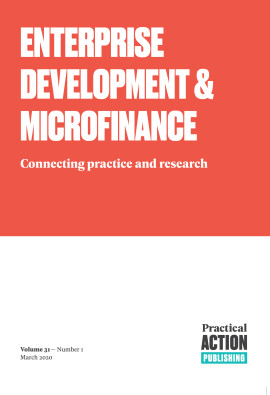Guest editorial: Smallholder cassava production and the cassava processing sector in Africa
Whichever way you look at it, cassava is important for the future of Africa. Whether from the perspective of tackling hunger in a world of uncertain climate conditions, as a source of food security when other crops fail, as a means to create a cash income through processing and sales, as a driver of local agro-industry, as a way of reducing the cost burden of imports through substitution and/or biofuel production, or, for many hopeful politicians, as a future export crop with comparative advantage. The FAO says that the world produced 277 million tonnes of cassava in 2013, of which 158 million tonnes came from Africa (57 per cent) and 54 million tonnes from one country, Nigeria (19.5 per cent). None of this African production is traded; all is consumed domestically. How much is lost post harvest: we only have a vague idea. What we do know is that yields are very low by international standards. On a recent mission to Nigeria I listened to a group of experts agree a target yield of 12 tonnes a hectare; a low level of ambition when the starting point is somewhere between 6 and 12 tonnes per hectare and the most efficient are reaching 20 to 30 tonnes per hectare.Targeted Genome Engineering via CRISPR/ Cas9 in Plants
Genome modifications in cassava
Imran, Hajira
Baig, Danish Ilyas
Jabbar, Warda
Gul, Alvina
Gul, Warda
Ozturk, Munir
Turkyilmaz Unal, Bengu
García-Caparrós, Pedro
2024
https://doi.org/10.1016/B978-0-443-26614-0.00023-0 [Citations: 0]Cassava response to the integrated use of manure and NPK fertilizer in Zambia
Biratu, Gizachew Kebede
Elias, Eyasu
Ntawuruhunga, Pheneas
Sileshi, Gudeta W.
Heliyon, Vol. 4 (2018), Iss. 8 P.e00759
https://doi.org/10.1016/j.heliyon.2018.e00759 [Citations: 31]Intellectual, Scientific, and Educational Influences on Sustainability Research
Urbanization and Its Implication for Sustainable Development in a Circular Economy
Onuoha, Mgbeodichinma Eucharia
2019
https://doi.org/10.4018/978-1-5225-7302-9.ch007 [Citations: 2]Impacts of cassava whitefly pests on the productivity of East and Central African smallholder farmers
Paul, Mwebaze
Sarina, Macfadyen
Paul, De Barro
Anton, Bua
Andrew, Kalyebi
Fred, Tairo
Donald, Kachigamba
Christopher, Omongo
John, Colvin
Journal of Development and Agricultural Economics, Vol. 14 (2022), Iss. 3 P.60
https://doi.org/10.5897/JDAE2022.1330 [Citations: 6]African Handbook of Climate Change Adaptation
Agricultural Interventions to Enhance Climate Change Adaptation of Underutilized Root and Tuber Crops
Gweyi-Onyango, Joseph P.
Sakha, Michael Ajanja
Jefwa, Joyce
2021
https://doi.org/10.1007/978-3-030-42091-8_40-1 [Citations: 0]The threat of alien invasive insect and mite species to food security in Africa and the need for a continent-wide response
Sileshi, Gudeta W.
Gebeyehu, Solomon
Mafongoya, Paramu L
Food Security, Vol. 11 (2019), Iss. 4 P.763
https://doi.org/10.1007/s12571-019-00930-1 [Citations: 39]Cropping Practices and Effects on Soil Nutrient Adequacy Levels and Cassava Yield of Smallholder Farmers in Northern Zambia
Kaluba, Peter
Mwamba, Sydney
Moualeu-Ngangue, Dany Pascal
Chiona, Martin
Munyinda, Kalaluka
Winter, Etti
Stützel, Hartmut
Chishala, Benson H.
Merah, Othmane
International Journal of Agronomy, Vol. 2021 (2021), Iss. P.1
https://doi.org/10.1155/2021/1325964 [Citations: 13]African Handbook of Climate Change Adaptation
Agricultural Interventions to Enhance Climate Change Adaptation of Underutilized Root and Tuber Crops
Gweyi-Onyango, Joseph P.
Sakha, Michael Ajanja
Jefwa, Joyce
2021
https://doi.org/10.1007/978-3-030-45106-6_40 [Citations: 4]Adoption determinants of improved cassava varieties and intercropping among East and Central African smallholder farmers
Mwebaze, Paul
Macfadyen, Sarina
De Barro, Paul
Bua, Anton
Kalyebi, Andrew
Bayiyana, Irene
Tairo, Fred
Colvin, John
Journal of the Agricultural and Applied Economics Association, Vol. 3 (2024), Iss. 2 P.292
https://doi.org/10.1002/jaa2.112 [Citations: 9]Fungi and Aflatoxin Levels in Traditionally Processed Cassava (Manihot esculenta Crantz) Products in Homa Bay County, Kenya
Obong’o, Boniface Oure
Ayodo, George
Kawaka, Fanuel
Adalla, Morelly Kathy
International Journal of Microbiology, Vol. 2020 (2020), Iss. P.1
https://doi.org/10.1155/2020/3406461 [Citations: 2]Performance of Cassava under Lime, Fertilizer, and Legume Intercropping on Exhausted Land in Northern Zambia
Kaluba, Peter
Mwamba, Sydney
Moualeu-Ngangue, Dany Pascal
Chiona, Martin
Munyinda, Kalaluka
Winter, Etti
Stützel, Hartmut
Chishala, Benson H.
Clay, David
International Journal of Agronomy, Vol. 2022 (2022), Iss. P.1
https://doi.org/10.1155/2022/3649355 [Citations: 3]Cassava brown streak disease: historical timeline, current knowledge and future prospects
Tomlinson, Katie R.
Bailey, Andy M.
Alicai, Titus
Seal, Sue
Foster, Gary D.
Molecular Plant Pathology, Vol. 19 (2018), Iss. 5 P.1282
https://doi.org/10.1111/mpp.12613 [Citations: 96]- Design, construction, and performance evaluation of an innovative cassava peeling machine
- The dasheen itch factor and approaches to reducing its effect
- Insects in the human food chain: global status and opportunities
- COVID-19, seed security and social differentiation: when it rains, it pours
- Kenkey production, vending, and consumption practices in Ghana


